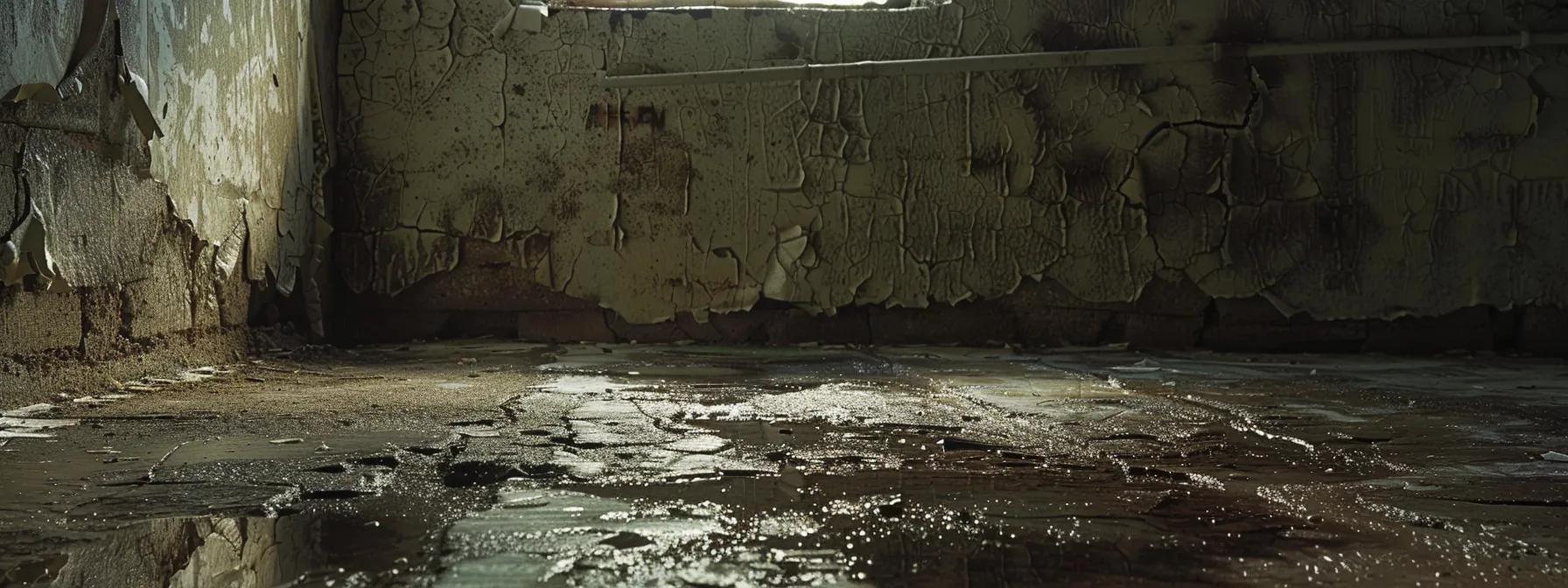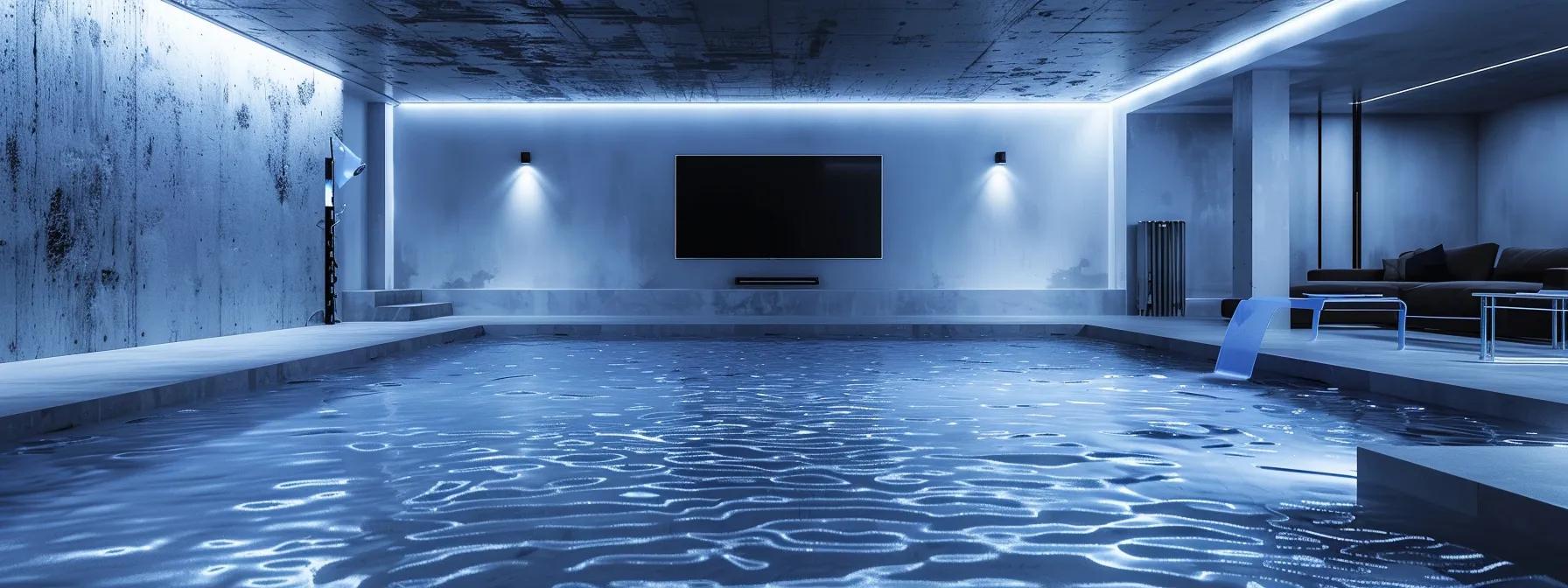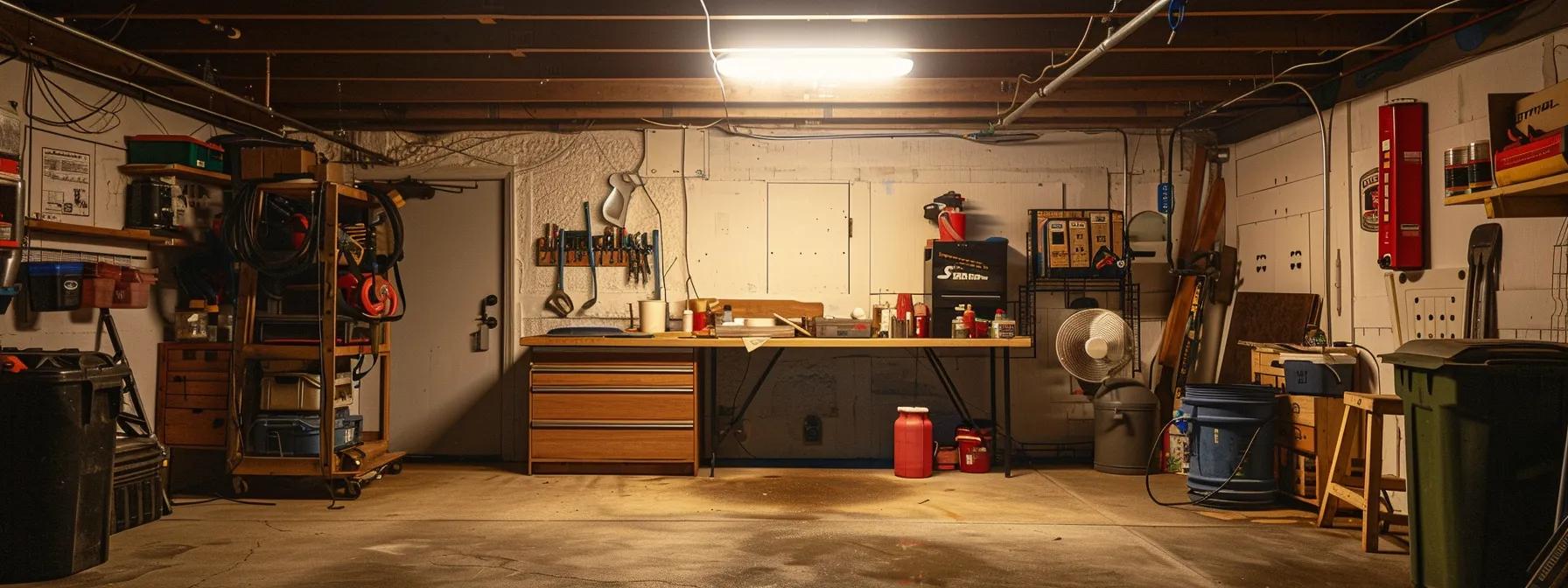What You Need for Effective Basement Waterproofing
Basements are vital parts of our homes, but when moisture sneaks in, it can threaten the entire foundation. At CW Basement Waterproofing, we know a wet basement doesn’t just risk structural damage—it can also lead to mold growth, poor indoor air quality, and expensive repairs down the line. That’s why we’re dedicated to providing reliable basement waterproofing Chicago solutions that protect your home, boost comfort, and add lasting value. Every home’s moisture problem is different. Whether water seeps through foundation cracks or condensation builds up due to humidity, pinpointing the cause is crucial. For Chicago homeowners dealing with groundwater and heavy rains, we offer practical tips and proven strategies—both inside and out—to keep basements dry and mold-free for good.
Identifying Basement Moisture Sources for Lasting Solutions

Understanding how water infiltrates your basement is key. Typically, moisture enters through foundation cracks, gaps around pipes, poorly sealed windows, and even the floor. Each source might require a different solution. For example, small wall cracks might need an epoxy injection, while gaps around window wells may require special drainage covers.
Recognizing Common Basement Water Entry Points
We start by closely examining your basement for leaks, damp spots, or discoloration on the concrete floor, all signs that water is intruding. These problems can be worsened by poor landscaping—such as an improperly graded lawn—that directs water toward the foundation. A detailed inspection can reveal whether the issues stem from concrete cracks, faulty window seals, or a rising water table during wet weather.
Performing a Thorough Basement Inspection Yourself
A DIY inspection is both efficient and cost-effective. We encourage a well-lit walkthrough of your basement to note signs of moisture intrusion like mold growth, peeling paint, or efflorescence on the walls. Using a moisture meter on walls and floors helps confirm potential problems. Be sure to check corners, around pipes, and where walls meet the ceiling to uncover hidden issues.
Understanding How Exterior Water Problems Affect Your Basement
Exterior factors strongly influence basement moisture levels. When water isn’t directed away from the home, it easily infiltrates the basement. Improper grading, clogged gutters, or heavy leaf debris can cause water to build up around the foundation. By understanding these cause-and-effect relationships, homeowners can address problems on both the exterior and interior fronts.
Simple Tests to Pinpoint Leak Origins
After inspecting your basement and exterior, simple tests can further pinpoint leak origins. A “water test” involves simulating heavy rain by spraying water around suspected areas; observe where water seeps in. Alternatively, adding a few drops of food coloring near suspected leaks can help trace the water’s path. These practical tests empower you to identify and address the precise source of water infiltration.
Essential Exterior Waterproofing Techniques for Homeowners
Protecting your basement starts with exterior waterproofing. This ensures water flows away from your foundation. Homeowners with basic DIY skills can implement several effective exterior techniques.
Grading Your Landscape to Direct Water Away
Correct landscape grading prevents water from pooling around the foundation. By sloping the soil away from the basement—typically at least 6 inches over the first 10 feet—we create a natural barrier that forces water to run off rather than seep into the structure.
Maintaining Gutters and Downspouts Properly
Gutters are vital for controlling water flow. Clogged gutters allow water to overflow near basement walls. Regular cleaning and maintenance ensure water is effectively channeled away. Installing downspout extensions that direct water at least 3 to 4 feet from the foundation further reduces basement water risks.
Applying Exterior Sealants and Membranes as a Diy Project
Many homeowners can apply exterior sealants themselves. These sealants and waterproof membranes create a barrier on the concrete surface, preventing water from penetrating through small cracks or porous areas. The process requires proper surface preparation and multiple coats, offering long-lasting protection, especially for older foundations.
Installing or Repairing Foundation Drains
Foundation drains, such as French drains, collect and redirect water away from your basement. In areas with heavy rain or high water tables, a working foundation drain is essential. Regular inspection and maintenance of these systems help prevent significant water build-up and seepage indoors.
Considerations for Window Well Drainage and Covers
Basement windows below ground level need extra attention. Inadequate drainage around window wells can lead to water collecting against the glass and eventually infiltrating the interior. Installing window well covers and ensuring proper drainage around them can significantly reduce leak risks and boost energy efficiency.
Interior Waterproofing Methods You Can Implement

While exterior solutions are crucial, interior waterproofing provides another defense against moisture. These methods focus on sealing off any points of ingress and managing any water that makes it inside.
Sealing Cracks in Basement Walls and Floors
Cracks in the walls or floors are common pathways for water. We use high-quality epoxies or polyurethane products to fill these gaps. Working on clean, dry surfaces ensures the best adhesion. Sealing these cracks not only stops leaks but also reduces the potential for mold growth and structural damage.
Applying Interior Waterproofing Paint and Sealers
Interior waterproofing paints and sealers are designed to repel water and protect basement surfaces. Applied in multiple coats, these products create a durable barrier that resists moisture and helps prevent mold and mildew growth, especially in areas with minor leaks or low moisture levels.
Installing an Interior Drainage System: A DIY Guide
When water does enter the basement, an interior drainage system can help manage and remove it before damage occurs. Typically, this involves installing a perimeter drain that channels water to a sump pump. We guide homeowners through the process of cutting grooves, installing drainage channels, and sealing them properly to direct water into a sump pit where it is efficiently pumped away.
Understanding Sump Pump Basics for Homeowners
A sump pump is essential for removing water from your basement. It prevents water accumulation by actively expelling water that enters the space. Regular testing, cleaning the pump’s inlet, and ensuring proper flow are critical. We also recommend installing a battery backup unit to maintain operation during power outages.
Using Dehumidifiers to Control Basement Moisture
Even with effective sealing and drainage, high humidity can promote condensation and mold growth. Selecting a dehumidifier suitable for your basement size helps maintain optimal moisture levels. Regularly monitoring and cleaning your dehumidifier further supports a healthier, mold-free environment.
Gathering the Right Tools and Materials for DIY Basement Waterproofing
Success in any DIY project starts with having the proper tools and materials. At CW Basement Waterproofing, we stress the importance of using robust, reliable products that can withstand the challenges of basement waterproofing.
Selecting Appropriate Sealants and Waterproofing Compounds
Choosing the right sealant is critical. Consider factors like the type of surface, environmental exposure, and durability. Epoxy-based sealants work well on concrete, while polyurethane may be better for flexible applications. Ensure the product is formulated for basement use and comes with a warranty.
Safety Gear You Need for Basement Waterproofing Projects
Safety should never be compromised. Use gloves, safety goggles, masks, work boots, and durable clothing to protect yourself during the project. This gear minimizes risks from chemical exposure and other hazards during the waterproofing process.
Renting Versus Buying Specialized Waterproofing Equipment
For larger or more complex projects, you might opt to rent specialized equipment like high-powered pressure washers or masonry drills. Renting can be cost-effective when the equipment is needed for a short period and ensures you have access to professional-grade tools without a full purchase.
Practical DIY Basement Waterproofing Tips for Homeowners

Practical DIY tips can make the difference between a temporary fix and long-term waterproofing success.
Step-by-Step Guide to Patching Minor Foundation Leaks
When minor leaks appear, act immediately by cleaning the affected area and applying a high-quality, waterproof epoxy. Remove any loose material with a chisel and brush, then ensure the area is dry before mixing and applying the epoxy. This method stops water from entering and reduces the chance of future leaks and mold growth, preserving your foundation and reducing repair costs.
Improving Basement Ventilation to Reduce Humidity
Good ventilation is critical for reducing humidity and condensation. We recommend installing exhaust fans, opening windows when possible, and adding vents if necessary. Combining natural airflow with mechanical dehumidifiers helps maintain a consistent, dry environment and enhances indoor air quality.
DIY Tips for Waterproofing Basement Windows
Basement windows can be vulnerable to leaks. Start by inspecting window wells for cracks or gaps and repairing them with masonry caulk or waterproof tape. Ensure window well covers are properly installed to prevent debris build-up while allowing drainage, and add weather stripping around the window frame to further block water.
Addressing Condensation on Pipes and Walls
Condensation occurs when warm, moist air contacts cold surfaces like pipes and walls. Insulating pipes with foam sleeves and applying vapor barrier paint on walls can drastically reduce this problem. Regulating the indoor temperature with dehumidifiers further minimizes condensation and protects against mold growth.
Easy Ways to Check Your Sump Pump’s Operation
Periodically test your sump pump by pouring a bucket of water into the sump pit. Observe whether the pump activates promptly and efficiently removes the water. Regular tests help detect if maintenance or replacement is needed, ensuring the pump continues to keep your basement dry during heavy rains.
Maintaining Your Waterproofed Basement and Knowing When to Call a Pro
Ongoing maintenance is essential for long-term waterproofing success. Regular inspections and small fixes ensure your basement remains dry. In this section, we discuss routine upkeep and how to identify when professional help is required.
Regular Maintenance Checks for a Dry Basement
Consistent monitoring is key. Inspect walls for new cracks or damp spots, check your sump pump’s operation, and clear gutters regularly. Scheduling seasonal inspections—especially after heavy rains or snow—can catch and address minor issues before they escalate.
Signs That Your DIY Waterproofing Efforts Need Professional Help
If water keeps seeping in, cracks come back, mold won’t go away, or condensation keeps showing up despite your DIY efforts, it’s a clear sign to bring in the experts. These issues mean that more advanced repairs are necessary—something we specialize in with our basement waterproofing Chicago services.
Understanding the Limits of Do It Yourself Basement Waterproofing
DIY waterproofing can be effective for minor issues, but it has its limits. For severe water problems, extensive foundation repairs, or persistent infiltration, the expertise of a professional basement waterproofing company like CW Basement Waterproofing is essential. We provide comprehensive assessments and advanced solutions that safeguard your property in the long term.
Questions to Ask Before Hiring a Waterproofing Contractor
Before hiring a contractor, ask about their experience with similar issues, request a detailed proposal outlining materials and methods, and inquire about warranty periods. Check certifications, references, and customer reviews to ensure you’re choosing a trustworthy professional.
Summary Table of Waterproofing Tools and Techniques
Before we move on to the FAQ section, here is a summary table comparing key waterproofing tools and techniques, their functions, and benefits:
This table summarizes the essential tools and techniques we rely on when planning our basement waterproofing projects, whether DIY or professional.
Frequently Asked Questions
Q: How do I know if my basement needs waterproofing? A: Signs such as damp walls, efflorescence, mold growth, and water stains indicate that your basement may be absorbing moisture. It is important to inspect both the interior and exterior of your foundation regularly, especially after heavy rains, to catch problems early.
Q: What is the most effective exterior waterproofing method? A: Proper grading of your landscape is key. By sloping the ground away from your home and ensuring clear gutters and downspouts, you greatly reduce water infiltration. Pairing this with exterior sealants further enhances long-lasting protection.
Q: Can I handle basement waterproofing as a DIY project, or should I hire a professional? A: Many tasks, like sealing minor cracks and applying waterproof paint, can be handled as DIY projects. However, extensive water damage, persistent leaks, or structural issues are best addressed by professionals. Our team at CW Basement Waterproofing is equipped to ensure a truly dry basement in complex cases.
Q: How often should I maintain my basement waterproofing system? A: We recommend maintenance checks at least twice a year or after heavy rainfall. Regular gutter cleaning, inspecting foundation seals, and testing your sump pump will help prevent small issues from growing into major problems.
Q: What is the average cost of basement waterproofing in Chicago? A: Costs vary based on the extent of the issues and the work required. Homeowners typically spend between $1,500 to $5,000 for comprehensive waterproofing. Investing in quality materials and professional services adds long-term value and protects your home’s foundation.
Q: How do dehumidifiers contribute to basement waterproofing? A: Dehumidifiers reduce excess humidity that leads to condensation, mold growth, and musty odors. Keeping the air dry complements other waterproofing methods and maintains a healthier indoor environment, especially in basements with cool concrete surfaces.
Q: What are the warranties available on professional basement waterproofing services? A: Reputable contractors like CW Basement Waterproofing offer warranties ranging from a few years to lifetime coverage on the waterproofing system, depending on the treatment and materials used. These warranties provide peace of mind by protecting your investment over the long term.
